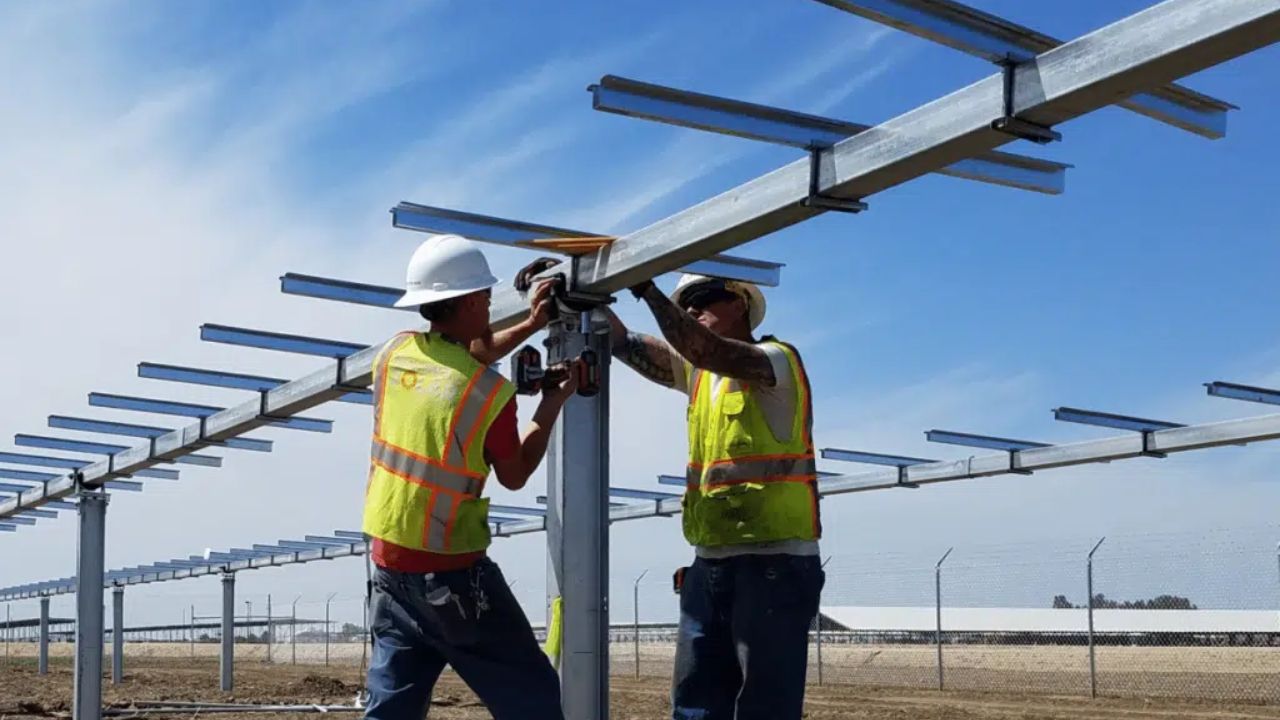Solar power stands as a primary renewable energy solution that helps decrease carbon emissions while satisfying increasing energy requirements. Solar tracking systems transformed photovoltaic (PV) energy generation through efficiency improvements and better sunlight absorption capabilities. The torque tube stands as a fundamental system component that maintains both structural integrity and movement performance. The Torque Tube for Solar Tracker is an essential component that ensures the efficient rotation of solar panels.
The Importance of Torque Tubes in Solar Tracking
Solar tracking systems boost energy production because they enable solar panels to track the sun's daily path. The fixed-tilt system design remains stationary but single-axis and dual-axis trackers use rotating panels to optimize their energy capture capabilities. The torque tube functions as both the main support element and rotational system which connects multiple PV modules to achieve coordinated movement.
Key Design Factors for Sustainable Torque Tubes
Material Selection and Durability
Manufacturers produce torque tubes from high-strength carbon steel which receives a protective galvanization coating to stop corrosion. Torque tubes need corrosion resistance because they experience continuous exposure to outdoor moisture and humidity and changing weather conditions. The combination of galvanized steel hot-dip galvanization (HDG) and pre-galvanization (GI) coatings extends product life expectancy while protecting against environmental damage. The combination of lightweight durable materials reduces structural weight requirements and simplifies installation procedures without compromising mechanical performance. The torque tube achieves extended service life in sustainable energy systems through the application of advanced coatings and anti-corrosion protective measures.
Shape and Structural Efficiency
Torque tubes exist in circular, square, pentagonal, octagonal, and D-shaped cross-sections that deliver distinct performance benefits. The circular shape of torque tubes distributes stress uniformly across the structure which minimizes potential structural deformation. The square and rectangular tube design provides superior strength against both bending and torsional loading conditions. The combination of D-shaped and polygonal tubes achieves optimal material efficiency by balancing weight against strength. The selection of tube shape for solar tracking systems requires consideration of weight capacity alongside construction simplicity and wind resistance performance.
Precision Engineering and Manufacturing
The precision of torque tube manufacturing operations determines how efficiently solar trackers function. The combination of CNC machining multi-spindle drilling and robotic welding allows manufacturers to achieve precise hole alignment stable joints and seamless tracker system integration. The simultaneous operation of multiple drilling spindles produces precise holes in one operation which enhances both precision and minimizes assembly mistakes. Robotic welding operations produce uniform high-strength joints that strengthen the torque tube against external stresses.
Wind Resistance and Structural Stability
The installation of solar farms in windy areas requires torque tubes as a fundamental element for maintaining structural stability. The combination of aerodynamic optimization with reinforcement methods including swaging, crimping, and tapered ends minimizes wind-induced vibrations and structural stress within the system. Anti-galloping features protect torque tubes and tracker components from oscillations which otherwise lead to lasting damage.
The Role of Torque Tubes in Sustainable Energy Production
Maximizing Energy Output
A properly engineered torque tube enables solar panels to follow sunlight without encountering significant mechanical obstacles. High-quality torque tubes minimize mechanical inefficiencies and misalignment which results in increased daily energy production. Research indicates that durable torque tubes on single-axis trackers boost solar energy output by 15% to 25% above fixed-tilt systems.
Reducing Maintenance and Lifecycle Costs
The long-term sustainability of solar energy projects depends on successful efforts to reduce both maintenance expenses and replacement requirements. The design flaws of torque tubes result in rapid wear and misalignment which requires recurring maintenance. Solar farm operators who invest in high-quality materials and precision engineering achieve reduced operational downtime and extended solar tracker lifespan which ensures long-term energy efficiency.
Supporting Large-Scale Solar Projects
The expanding demand for utility-scale solar farms requires reliable high-performance torque tubes to become a critical component of the industry. The extensive size of solar farms demands strong structural elements that must endure decades of continuous operation. Manufacturers who optimize torque tube design enable solar power projects to scale up while maintaining sustainability across worldwide markets.
Conclusion
The transition to solar energy systems requires designers to focus on creating systems that combine efficiency with durability and sustainability principles. The torque tube functions as a vital solar tracking system component which boosts both energy output and system stability and operational longevity. Manufacturers have achieved efficient and reliable solar farm operation through decades by using advanced materials combined with precise engineering and innovative designs for torque tubes. The selection of premium torque tubes represents both a technical decision and a strategic move toward building a sustainable renewable energy future.


